资料翻译--Rockstor配置Openvpn
来源:互联网 发布:畅言教学软件 编辑:程序博客网 时间:2024/05/18 03:56
OpenVPN服务
Please be aware of the common prerequisites for all Rockstor Rock-ons (Docker Plugins); specifically theInitial Rock-ons Setup and The Rock-ons root requirement.
Our OpenVPN server Rock-on forum area.
什么是OpenVPN
This Rock-on installs an OpenVPN or Open (as in Open Source) Virtual Private Network Server. This is a network technology that creates a private encrypted tunnel, usually over the internet. In combination with client software installed on another machine that initiates one end of the tunnel, this server forms the other end of this tunnel and does so at the request of the client software.
OpenVPN 需求
To use this OpenVPN server you will need an internet name, otherwise called a hostname, that point back to your Rockstor’s internet gateway. This allows the client software to be able to find your Rockstor machine on the internet; see An Internet Hostname or IP detailed below.
在Rock-on中安装OpenVPN
First please consider the pre-requisites for any Rockstor Rock-on; these are linked to at the top of this document.
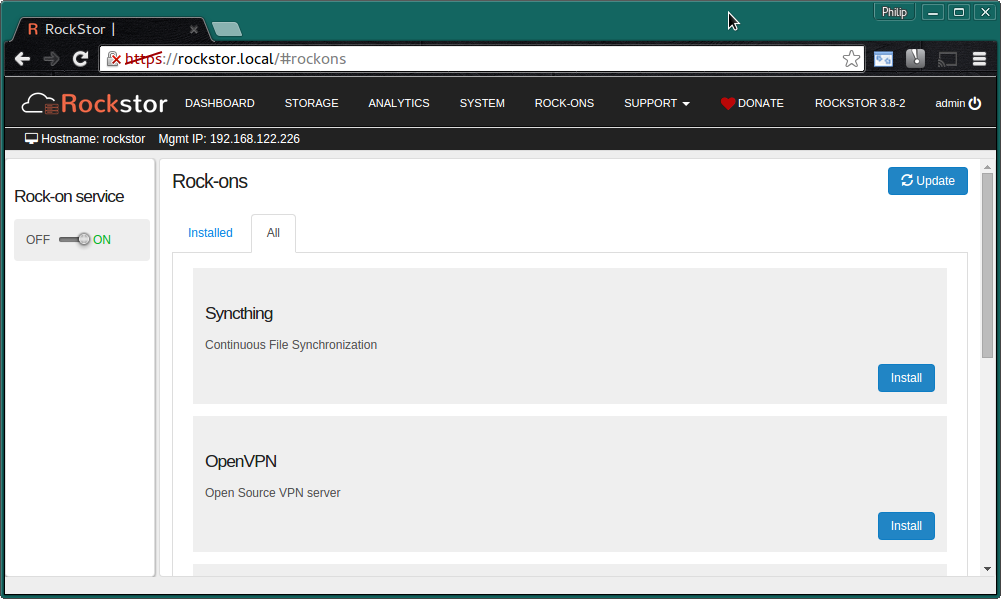
Click the Install button next to the OpenVPN listing on the Rock-ons page.
设置OpenVPN端口
The OpenVPN install wizard will first request that you set a port and will suggest the default:-
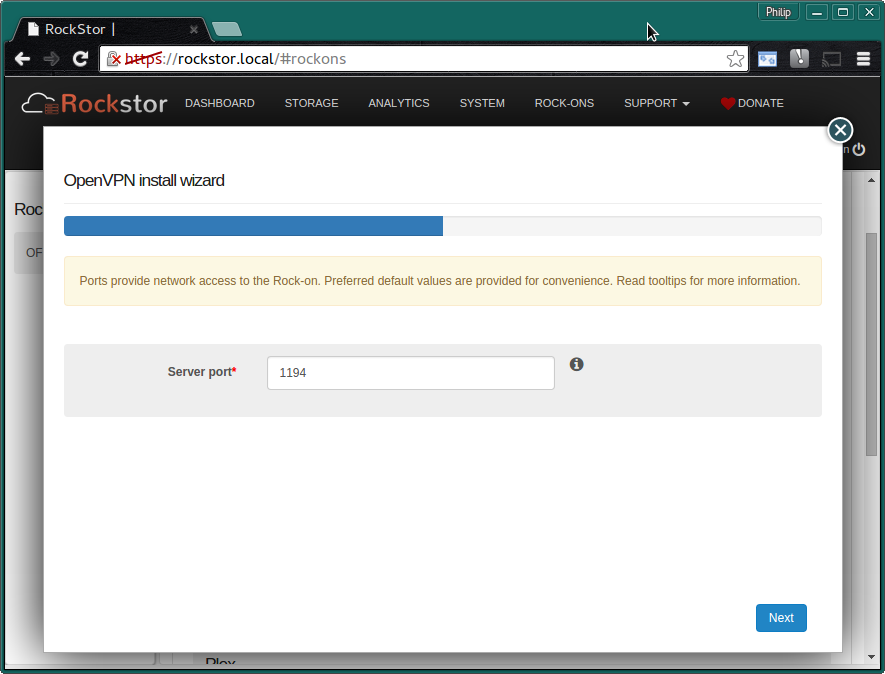
You may well have to open and forward the configured port on your Rockstor’s internet gateway router back to the Rockstor machine. This effectively makes at least this port on Rockstor appear on your router’s red (internet) interface. The client OpenVPN software can then talk directly and securely to your Rockstor’s OpenVPN Rock-on using this port.
设置Hostname或者是IP地址
Although the OpenVPN client can be told which port you are using it also needs to know where on the internet your Rockstor machine is; this is done using an internet hostname or in much less common instances your router’s public IP address, but this will only work in the long run if your public IP is static:-
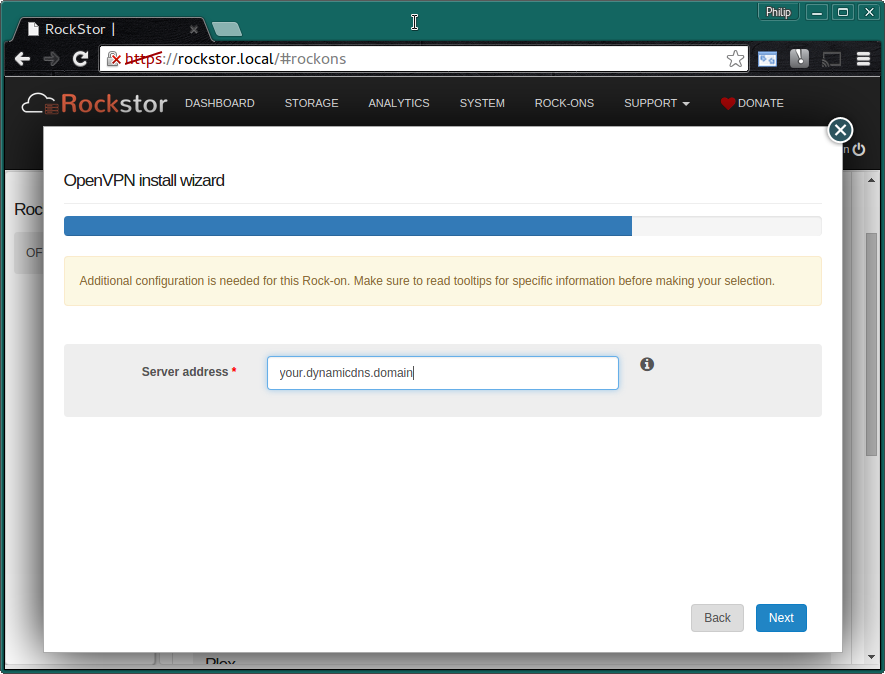
N.B. no default is provided as this is specific to your install, the image shows a made up example.
In the case of your internet connection having a dynamically assigned IP (common in domestic internet installs) you will have to use a dynamic dns naming services. These work by using client software running either on your internet router or on a machine within your network that periodically calls out to your dynamic dns naming provider and updates that provider with your router’s current location / IP on the internet. The dynamic dns naming provider will then update their publicly available records of the hostname you agreed upon during account sign up. This then allows for your Rockstor’s internet connection to be located by that hostname / IP.
The client OpenVPN software can then use this port / name combination to make the necessary connections to establish the tunnel.
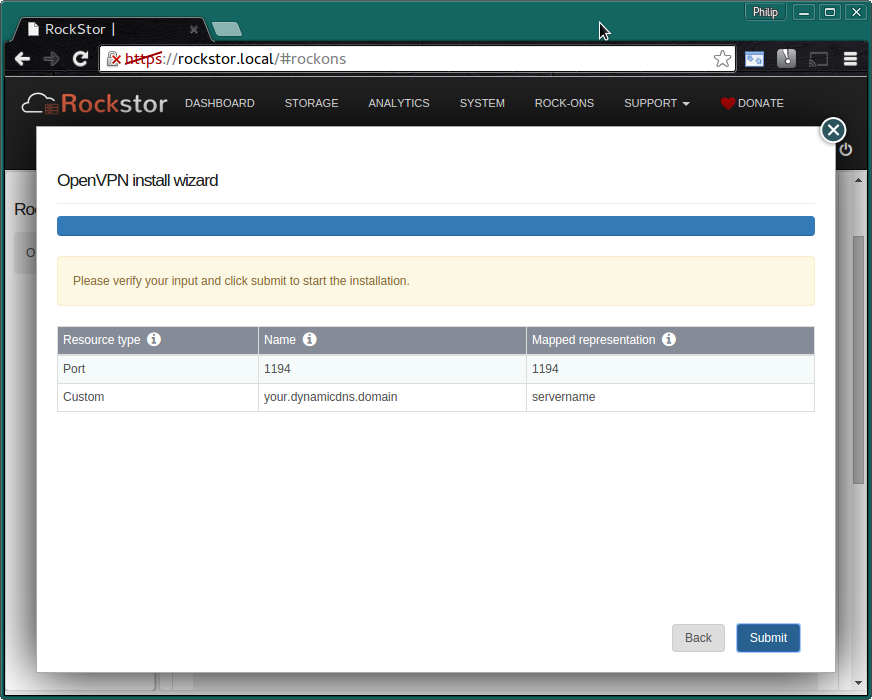
Now check that the entered details are correct before clicking Submit
认证证书
Once the install has completed you will see the following:-
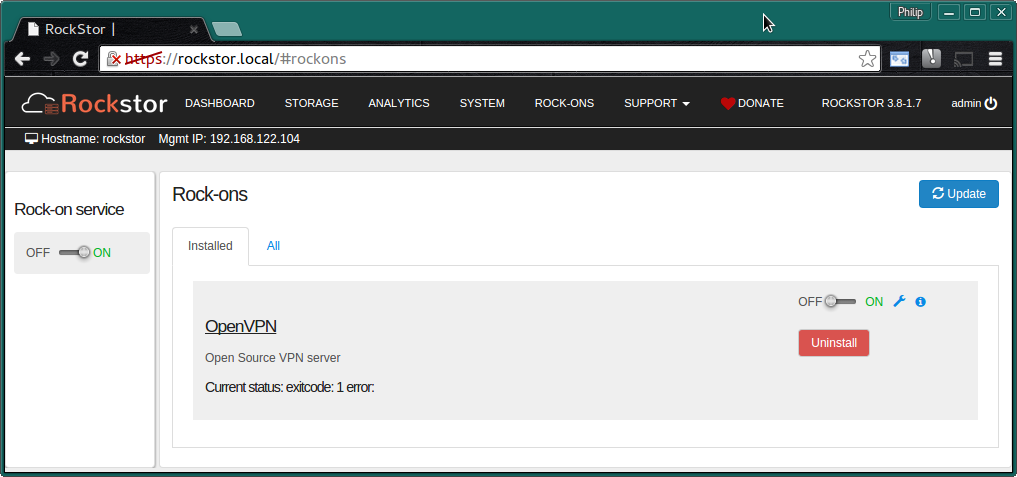
This is a peculiar complexity that exists in our first flush OpenVPN Rock-on implementation. Please click on the “i” icon to get the following instructions:-
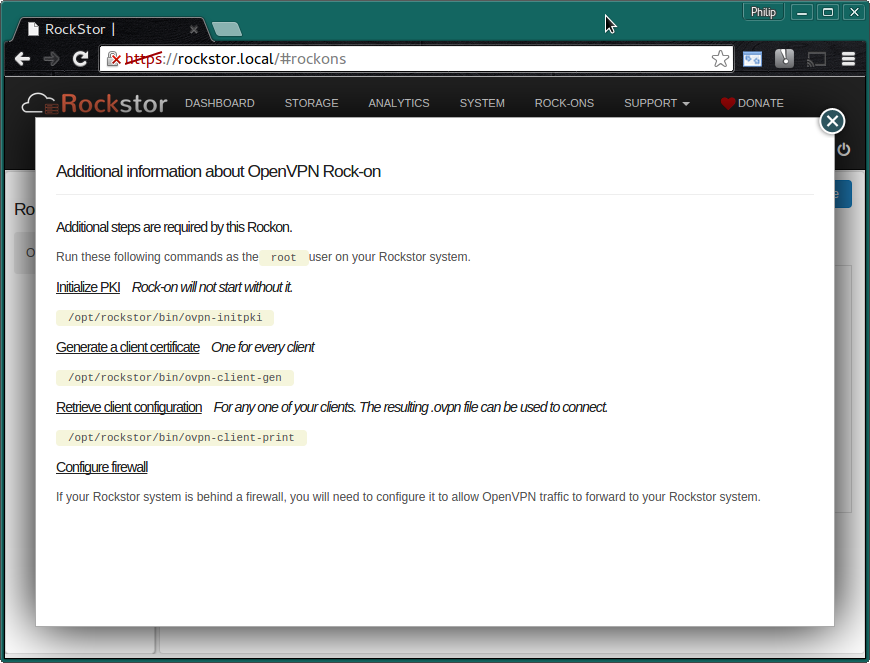
The above indicated steps are reproduced here for clarity:-
Additional steps are required by this Rock-on
Run the following commands as the root user on your Rockstor system ie via a ssh console.
Initialize PKI The OpenVPN Rock-on will not start without it:
/opt/rockstor/bin/ovpn-initpkiNote this command will ask for a PEM pass phrase, a Common Name (after which a long list of .’s and +’s will appear as the key is generated), and a pass phrase for the private key.
Generate a client certificate One for every client:
/opt/rockstor/bin/ovpn-client-genN.B this command will ask for the client name (no spaced) and a pass phrase
Retrieve the client configuration. For any one of your clients. The resulting .ovpn file can be used to connect to this OpenVPN server.:
/opt/rockstor/bin/ovpn-client-printN.B. this command will ask for the name of the client you wish the .ovpn file to be created for; the file will be placed in /tmp ie:-:
/tmp/<clientname>.ovpnPlease note that if you change your hostname you will need to regenerate your client authentication credentials and re-deploy them as they contain this information in order to inform the Client OpenVPN software on how to find your Rockstor’s OpenVPN Server Rock-on.
Now we just need to turn the OpenVPN Rock-on ON:-
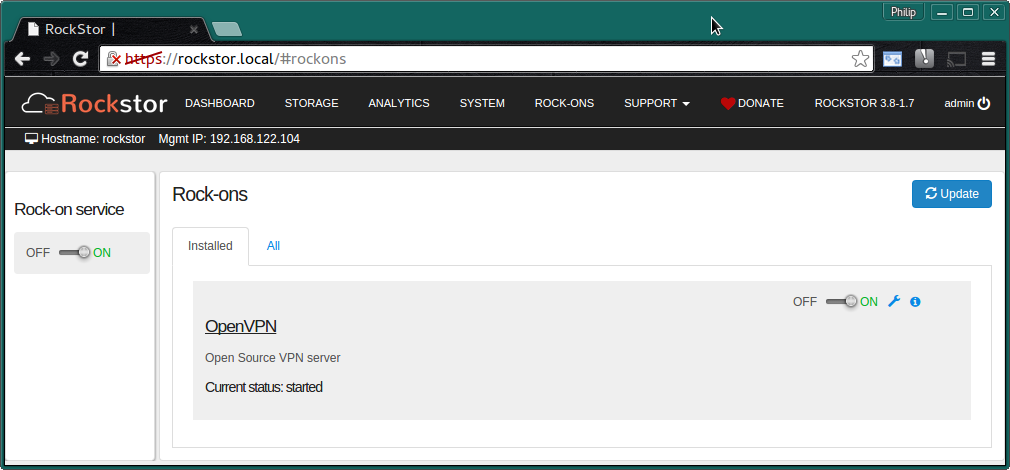
It should then appear as shown in the Installed tab above.
- 资料翻译--Rockstor配置Openvpn
- Rockstor配置Openvpn,然后win7用openvpn客户端连接
- Mac OS下OpenVPN安装配置资料总结
- openvpn配置
- OpenVPN 配置
- openvpn配置
- [资料收集]翻译资料
- OpenVPN 配置和使用
- Linux下配置OpenVPN
- 深入OpenVPN的配置
- openvpn客户端配置
- Milestone上Openvpn配置
- openvpn配置详解
- OpenVPN On CentOS5 配置
- OpenVPN配置笔记
- openvpn安装配置
- openvpn成功配置思考
- BT5R3 OpenVPN的配置
- 关于getChildFragmentManager()、 getFragmentManager()、getSupportFragmentManager()的使用
- cdoj 1131 区间dp
- Maximum Depth of Binary Tree
- jar包生成说
- BZOJ1150 数据备份
- 资料翻译--Rockstor配置Openvpn
- UI组件之UIWebView学习
- jquery 实时计算用户输入的字数
- hive概念
- NSURLConnecntion的问题
- 文件下载实现
- 学习Android推送功能笔记(6)---Mina--CodecFactory自定义和一点别的扩展
- Unix Network Programming(4)---TCP
- jrebel(转)


